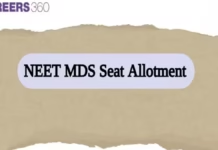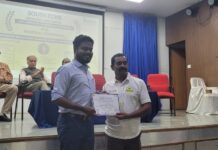Attributed to: Muddassar Nazzar,CEO,Birla Brainiacs
For years, education in India has been greatly influenced by access and opportunities that differ substantially between urban and rural areas. While cities have well-equipped schools, digital resources, and professional instructors, many rural communities face challenges like poor infrastructure, a lack of educated teachers, and limited resources. Such inequality has limited the potential of many children, affecting the progress of communities and the country as a whole. However, with the growth of educational technology (EdTech) and the rise of hybrid schooling and homeschooling models, this gap is gradually coming to an end.
According to the Ministry of Education, there are approximately 14.89 lakh schools in India. Among these, 12.34 lakh schools are in rural areas, while the rest are developed in cities. Traditionally, educational systems have struggled to access and engage children in rural areas. Today, EdTech has emerged as a critical tool in India, providing rural kids with access to excellent education and skill-building resources, whether they are attending a formal school, following a hybrid schooling approach, or are engaged in homeschooling. The increasing availability of smartphones and internet access has further propelled this revolution, allowing students in even remote areas to benefit from digital learning.
Here’s a look at some of the ways in which EdTech is altering education in rural India:
Collaborative Learning
With teachers adopting modern technologies in classrooms, hybrid schooling, and homeschooling setups, classes have become more consistent across regions. Educators are now capable of exchanging effective teaching practices using novel technology in schools and at home. Moreover, EdTech also provides parents with additional information about their children’s academic progress, making it easier to monitor learning even outside the classroom. Such automated progress communications to parents help children improve their overall exam results.
Personalised Education
Traditional classrooms are usually designed with a standard approach, which can overlook individual learning paces and preferences. By integrating EdTech solutions into both traditional and hybrid schooling models, this limitation is effectively addressed by allowing students to learn at their own pace, even if they are engaged in homeschooling. This adaptability benefits children who might be struggling with particular subjects or concepts, helping bridge the knowledge gap that can emerge in larger, less flexible classroom environments.
Enhanced Accessibility and Flexibility
Digital learning provides unprecedented flexibility and independence in education for students in rural India, breaking down geographical and financial barriers. Also, many EdTech platforms are mobile-friendly and can be accessed on smartphones, offering greater accessibility to education than computers in rural areas. This model supports homeschooling and hybrid schooling approaches, enabling students to access free or affordable high-quality educational resources from top educators across the country with just a click.
Important Announcement – EasyShiksha has now started Online Internship Program “Ab India Sikhega Ghar Se”
Interactive Learning
In recent years, the adoption of augmented reality (AR) and virtual reality (VR) in education has improved learning experiences for rural students, making education more engaging whether they are in school, learning through hybrid schooling, or following a homeschooling curriculum. Students may now understand complex topics through interactive visualisations, which improves both their attention and comprehension of the material.
Overcoming Linguistic Barriers
India is home to multiple languages across different regions, which has traditionally been a challenge, particularly in rural areas. With AI-focused language educational apps, students’ learning potential has significantly improved as they offer interactive courses in many languages, making them accessible to home-schooling families and hybrid schooling programs alike. Such a novel approach helps students grasp knowledge more efficiently. Furthermore, considering these advantages, Invest India, in its report, has projected that the Indian EdTech sector will reach USD 29 billion by 2030.
Also Read: Birla Brainiacs Welcomes Ayushmann Khurrana as an Investor and Official Brand Ambassador
In conclusion, the potential of EdTech in rural India extends beyond academic education. Whether through hybrid schooling, homeschooling, or traditional schooling, EdTech has revolutionised the educational landscape for rural students by focusing on the methods mentioned above. While challenges like digital literacy and internet access persist, steady development and inventive initiatives in the EdTech sector are increasingly overcoming these barriers. As more children in rural areas get access to educational resources, India gets closer to achieving the aim of providing quality education to everyone, regardless of geography.
With platforms like EasyShiksha.com, you can get started on this exciting journey from the comfort of your home, gaining the knowledge and skills necessary to thrive in the data-driven world.







































































